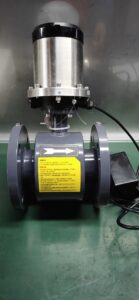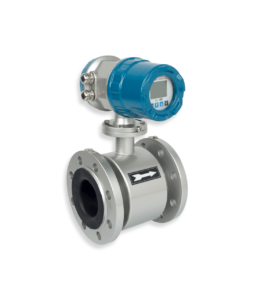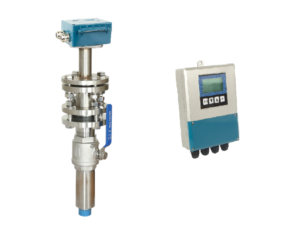The prerequisite for using an electromagnetic flowmeter is that the liquid to be measured must be conductive and cannot be lower than the threshold value (the lower limit). If the conductivity is lower than the threshold value, measurement error will occur until it cannot be used. Even if the threshold value is exceeded, it can be measured even if it changes. The indication error has not changed much.
The conductivity of industrial water and its aqueous solution is greater than 10-4S/cm, and the conductivity of acid, alkali and salt solution is between 10-4 and 10-1S/cm. There is no problem in use, and the low-degree distilled water is 10-5S/cm. There is no problem. Petroleum products and organic solvents cannot be used if the conductivity is too low. It is found from the data that some pure liquids or aqueous solutions have low conductivity and are considered unusable. However, in actual work, there will be instances where they can be used because they contain impurities. Such impurities are beneficial to increase conductivity. For the aqueous solution, the conductivity in the data is measured in the laboratory with a pure water ratio. The actual aqueous solution may be proportioned with industrial water. The conductivity will be higher than the foundation, which is also conducive to flow measurement.
There is also a liquid that cannot be measured by the electromagnetic flowmeter installed on the pipeline in the absence of ready-made conductivity data, but it is considered useful to take a sample from the field pipeline and go offline to the laboratory to measure its conductivity. This is because, in the offline process of sampling, the measured liquid has been different from that in the pipeline. The arm, such as the liquid, has absorbed CO2 or NOx in the atmosphere to generate a small amount of carbonic acid or nitric acid, which changes the conductivity.
Sometimes it is found from the data that the conductivity of a certain liquid is slightly lower than the threshold, and the actual temperature of the liquid used on-site is higher than the temperature when the data is measured, it is still possible to try because the conductivity of the liquid increases with the increase of temperature tend.
According to experience, the actual liquid conductivity is at least one order of magnitude greater than the threshold specified by the meter manufacturer. Because the threshold specified by the manufacturer’s instrument specification is the lowest value that can be measured under various conditions of use, it is actually often limited by some conditions of use, such as conductivity uniformity, connecting signal lines, external noise, etc. In practice, I have encountered many times when measuring low-degree distilled water or deionized water, and its conductivity is close to 5×10-6S/cm. Although it can still be measured, the output shaking phenomenon occurs during use. ADMAGCA type capacitive electrode electromagnetic flowmeter for pure water, pure alcohol, and other low-conductivity liquids have further made recommendations to limit the flow rate and install a long straight pipe length (20D) to reduce the impact of flow noise.



